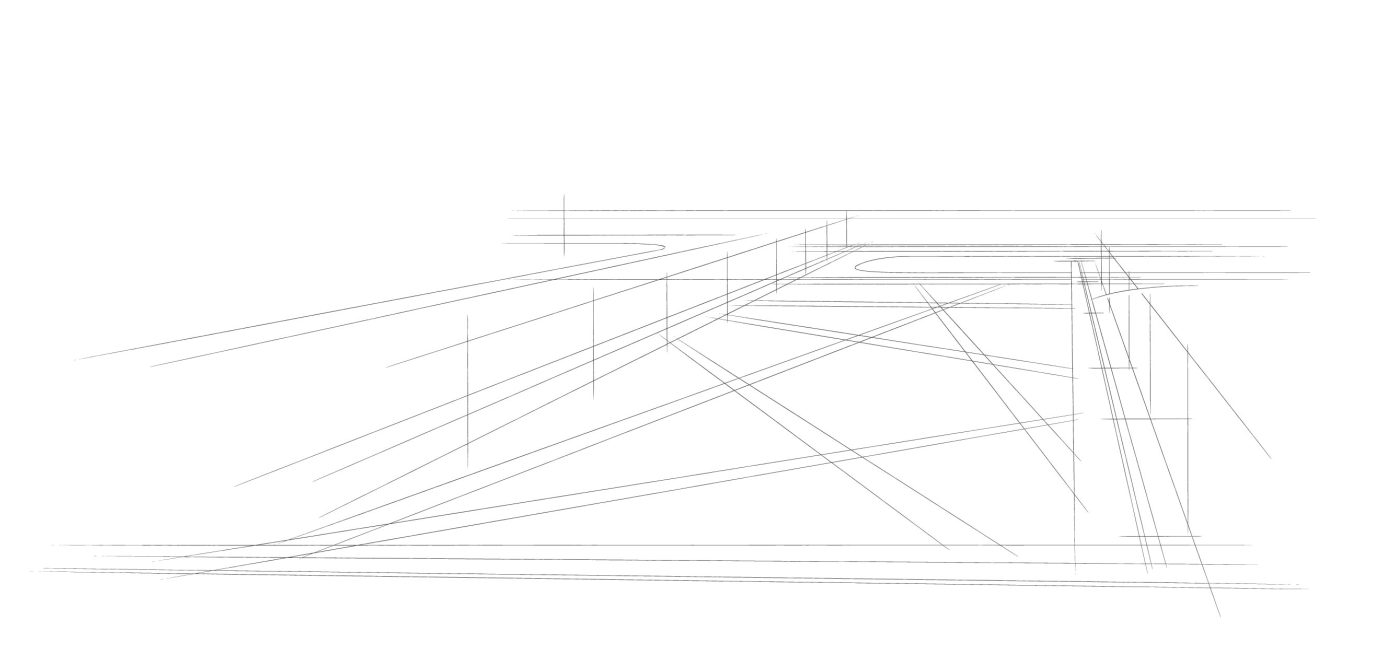Landscape Architecture for Landscape Architects › Forums › GRAPHICS › Hand graphics…to pay or not to pay???
- This topic has 1 reply, 21 voices, and was last updated 14 years ago by
Deryn Davidson.
-
AuthorPosts
-
March 28, 2011 at 3:27 pm #163914
Deryn Davidson
ParticipantI’m a first year MLA student with intermediate sketching abilities. I feel that having strong hand graphics is a very important skill set to have and one that I am dedicated to improving. I currently can sketch things that are in front of me pretty well, but pulling something out of my head and transferring it onto paper is another thing. So this bring me to Mike Linn and his workshops. I’m VERY tempted to take his 12 day course this summer, but it is quite expensive for my student budget.
My question is three-fold: 1) how important are hand graphic skills in your experience? 2) do any of you have experience taking a Mike Linn workshop and if so what can you tell me? 3) what is the general feeling about paying for an intensive hand graphics workshop vs. just plugging away and practicing on one’s own?
The testimonials from the website are amazing and I feel like it would not only improve my graphics, but also my confidence across the board because I would be able to better communicate my ideas. BUT is it worth it to pay???
Thank you for any advice,
Deryn
March 28, 2011 at 4:47 pm #163949Deryn Davidson
ParticipantThanks Lee. It seems clear that it would be beneficial, but it comes down to whether or not I feel like putting up the $$ right now…. we’ll see what happens!
P.S. I see you’re in Fort Fun?? I grew up there and will quite likely end up there again. How’s the job market for LA’s???
March 28, 2011 at 5:41 pm #163948 Jon QuackenbushParticipant
Jon QuackenbushParticipantI have a fine arts background and thought that I would utilize that a lot, and so far my computer rendering skills have paid much more dividends for final output. A lot of offices have people who are graphic specialists more or less (like myself), so unless you are hoping to find yourself in that role, don’t sweat the hand graphics too much. They are usefull at this point for people whom are extremely talented with them (there are many on this site), or as a mechanism to get your ideas out of your head and onto paper.
The latter is the primary use of hand graphics for me, creating a quick and dirty visual vocabulary for a project / concept, which then is taken to the computer at some point for final adjustment and rendering… I love hand renderings, but I also love the photo-realistic site plans I am generating now which start with ACAD line-work. I guess it boils down to company preference. The main advantage of digital is being able to adjust and make seamless design changes, as well as repeating visual styles with little additional effort. I have had site plan renderings that have had some major changes done to them well after the initial rendering, which if it were done by hand would have made it a very time consuming and profit eating expense for the firm (layer masks are your friend!)
I still say it is worth becoming adept at hand graphics because it teaches important lessons for image composition, perspective and shadowing…. all worthwhile things which make any digital work all the more believable.
March 28, 2011 at 10:43 pm #163947 Tonie C.Participant
Tonie C.ParticipantDeryn – I did the shorter 2-day and 7-day classes in San Francisco and felt that it was worth it. Of course I’m local so I didn’t have to pay for airfare or hotel. ; ) You are right that the confidence is almost as much a factor as the actual skill. It is taught boot camp style so I think the total immersion is a factor. I did as much rendering there in 9 days as I would have done in a year in a design program (100 hours or so)
March 29, 2011 at 12:45 am #163946 mauiBobParticipant
mauiBobParticipantDon’t pay!! The workshop sounds like a complete waste of time. Save your cash and buy stocks instead. Learn from others and then develop your own techniques and style.
March 29, 2011 at 1:38 am #163945 ncaParticipant
ncaParticipantFor what its worth..
I bought the Mike Lin book 10 years ago when I was a landscape designer before going back to school. I just read and copied what I saw..over and over until it started to look like the images in the book. I like Jon’s comments–I agree that there is a difference between hand ‘rendering’ and hand ‘sketching.’ Along those same lines–I had a professor once who procalimed that ‘no one gets paid to doodle..’ Thats BS. Doodling is what your hand should be doing when your brain doesnt know how to solve the design problem. It pays to be practiced enough in hand sketching to draw fairly accurately in perspective, aerial perspective, section, plan, etc.
I also agree that there is a lot one can do with the computer, especially AFTER a person understands how to quickly construct perspective. There’s no need to model an entire site for a conceptual sketch once you ‘get it.’
Fwiw–Here’s a quick computer ‘sketch’ I did for a park idea in a a few hours. The linework is just the illustrator pen tool and the color stuff is photoshop. This is going into Design Development on a project so we’ve already completed a number of hand sketches, studies and diagrams, so a little more detail is appropriate without spending hours modeling, etc.
March 29, 2011 at 3:16 am #163944 Heather SmithParticipant
Heather SmithParticipantWe had a Linn workshop offered when I was getting my BLA…I did not take the class though. How good are your professors? The professor that taught our hand graphics course, Steve Drown, was really good and I felt like I learned a lot from him. I guess it depends on whether you think this course will offer you more tools or not. The people I knew who took it liked it, I didn’t find out though if they thought it was worth the cost or not. In fact, my department might have brought him in…I can’t remember.
March 29, 2011 at 3:39 am #163943 James AtchisonParticipant
James AtchisonParticipantDeryn,
Let me start out by saying that I have attended Linn’s workshop as well as ESDA’s graphic workshop. I find you always learn something new because of the different perspectives from each class. I have changed things like, the type of pen I use to the color of markers I keep together. It depends on what you want out of the workshops (the more specific you are the better). I have bought the book (Drawing and Designing with Confidence) before Linn’s workshop and the only thing I saw was HOW to draw what he draws. Quick little short cuts that Linn points out are helpful for sketching, but not final presentations. One thing I keep hearing over and over again is, trace what you like and get to the point where you do not need to trace it again!
I keep hearing that my hand graphic skills are what sets me apart from the students coming out of school. Remember we are designers that communicate through a graphic “language.” If you are taking a class to help with that language, then it might be worth it.
March 29, 2011 at 3:51 am #163942 Andrew SpieringParticipant
Andrew SpieringParticipant1. Hand graphics are very important! Here‘s discussion on the topic.
2. I have not taken his course, but sat in to observe. From what I saw, he was able to help his students develop confidence in their drawing skills that was seen in their before/after drawings. Basically, he teaches you how to find confidence by practicing a few methods over and over and over again.
3. I agree with Nick. I was very inspired by his book and was able to replicate what I saw. It ultimately depends on how you learn, though.
Also, we are offering a drawing webinar with Jim Leggitt that would be well worth checking out… http://land8lounge.com/events/land8-webinar-tradigital
March 29, 2011 at 4:48 am #163941 Jennifer de GraafParticipant
Jennifer de GraafParticipantI have taken the course, I did so when I was an undergrad and felt that it was WELL WORTH IT. If you truly can’t afford it, at least buy the book and take whatever you can when the money is there.
March 29, 2011 at 9:20 am #163940 mauiBobParticipant
mauiBobParticipantWhile I respect everyone’s opinions…you can’t convince me the workshop at around $245+ per day plus cost of own food is worth it. All the students that come out of the workshop all possess the same graphic style shown in the book. Nothing worse than cookie cutter style, especially the plan view graphics of trees and shrubs.
While graphics is certainly important to LAs, most of the plans and images produced now are adequate enough for clients and presentation submittals. The really elaborate images and illustrations in photoshop, 3D studio or by hand render you’ve seen are “usually” done by illustrators or graphic computer specialists, not registered landscape architects. There are plenty of graphic books and uTube videos out there to study on your own time. Practice, PRACTICE and more Practice…is the key to good graphic technique.
March 29, 2011 at 11:40 am #163939 Andrew Garulay, RLAParticipant
Andrew Garulay, RLAParticipant1.) How important are hand graphics?
It is a diverse profession – many parts of it do not have high value for hand graphics and many offices use other presentation strategies that no longer require a need for a high skill in hand graphics. However, in a limited job market, limiting your opportunities might not be a good idea.
I do not have good hand graphic skills (dropped out in ’83 because of it – went back when CAD made the difference and graduated in ’97). I’ve never worked for a large LA firm, but have worked for licenced LAs in design/build, in engineering/land planning offices, and do a good residential design side business with zero hand graphics and it is never an issue.
2.) Experience with Mike Lin? I do not, but I know several people who have (going back to 1982) all of whom were decent graphic people to begin with and came out of it having taken it to a next level. (my next level would likely not have been worth it, theirs was).
3.) general feeling on course vs. practice?
My opinion is that this type of class is going to give you technique to enhance your own skills (whatever those are). Practice is going to develop and sharpen your skills. They are two different things.
This is your first year, so you have time to understand where you are with your skill sets and a better grasp on what will help YOU over the next couple of years. My suggestion is that you wait to see if you might want to take it when you have a better skill set to work off of and a better understanding of where you are going in the profession. If you take the course, bring a developed skill set to be enhanced and it will be of more value and a better investment.
March 29, 2011 at 11:40 am #163938 Jon QuackenbushParticipant
Jon QuackenbushParticipantI agree, completely.
Deryn, you may also want to look into local community colleges and/or art centers in your community, they usually have art classes which are just as relevant to brain-hand-paper as any Lin course… and they will be cheaper.
Then, youtube it up!
March 29, 2011 at 12:30 pm #163937Matt Sprouse
ParticipantI’m in agreement with several people’s response – hand graphics are VERY important. Hand graphics show how you think and express process and individuality. In interviews, I go immediately to the hand graphics in someone’s portfolio (and I always ask if it is their work). You will learn so much in an office about rendering style, color selection, line weight, etc.
As for Mike Lin, I have never taken his class. Someone stated that you will learn valuable tricks, and I think that is a great choice of words. Rendering is different from drawing because is it usually done quickly and as the last push before a presentation. That said, tricks are important.
If you can’t take the class, find someone at your school who is a good graphics renderer (professor) and do an independent study. Definitely learn some computer graphics but don’t’ rely on it. It is quickly becoming a commodity that can be outsourced. Individual stylistic renderings will always be unique and can become a signature for an office.
March 29, 2011 at 1:43 pm #163936 Jon QuackenbushParticipant
Jon QuackenbushParticipantSome renderings are done quick and dirty and under duress, and in that situation rendering by hand may be the best bet…
or
Drawing the linework by hand, scanning, then breaking out the graphics tablet and adding color in photoshop. I like adding color separate from my linework because once you add color to the original you can’t go back… changes are very difficult and forget about correcting a mistake (such as smearing your palm in an area where you thought the marker was dry causing a very homely smudge)
-
AuthorPosts
- You must be logged in to reply to this topic.




